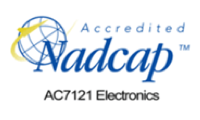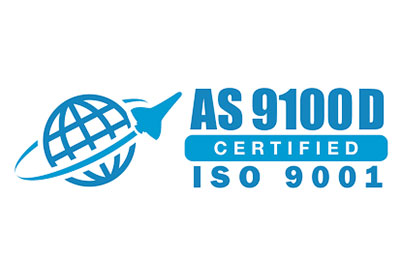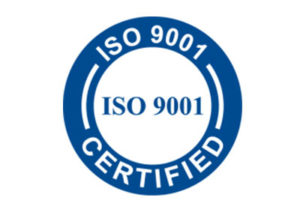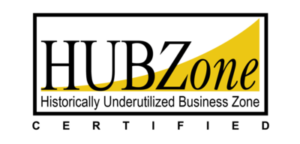Table of Content
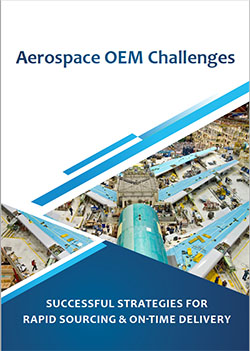

Introduction


In 2019, the aerospace and defense industry sectors are enjoying an unprecedented surge both in demand and technological advances. Market growth of narrow body passenger aircraft leads the sector growth in commercial aircraft, fueled by an increase in passenger travel, particularly in the Asia-Pacific Region. Defense spending is on the rise, thanks to the National Defense Authorization Act of 2018, which increased the Pentagon’s budget to $692 billion dollars, up from the $590 billion dollars spent in 2017.
The resurgence of these two industries in post-recession America has put a spotlight on three primary supply chain issues: lack of production capacity to fill orders, long lead times and late deliveries. As with any complex issue, aerospace and defense organizations are citing a constellation of problems impacting their supply chains:
Many manufacturers were not prepared to maintain and service mature manufacturing systems. Complicating the problem further, many suppliers have failed to invest in the next generation of technology by not taking advantage of new strategies, like additive manufacturing.
Manufacturers have not hired and trained replacements for retiring baby boomers. The lack of a technical domestic workforce is a major obstacle to growth because outsourcing to countries like Mexico, India, China and Brazil is too risky for both quality and security reasons.
Twenty percent of experienced military suppliers have left the sector between 2011 and 2015 due to funding uncertainty and complex regulations.
Tariffs on imported goods have created pricing pressures in global markets, however, the electronics market has been agile in sourcing from a variety of global locations, therefore the long term effects are not yet known.
This increase in order volume has created a three-fold challenge for many original equipment manufacturers (OEMs)
- Production capacity has to increase quickly and efficiently (agile manufacturing),
- Pricing pressures will continue to motivate manufacturers to reduce overall operational costs,
- Investment in higher inventory levels to avoid longer lead times due to lack of inventory.
Successful manufacturers are scaling production by taking a holistic approach to operational efficiencies beginning with engineering designs that reduce complexity and introducing newer methodologies such as additive and lean manufacturing to eliminate waste throughout the value stream.
A close partnership with industry suppliers is essential to assure that OEMs are able to fulfill orders on time while holding their profit margins.
Manufacturer’s representatives can play a key role in connecting OEM’s to suppliers that can offer creative solutions to scale production, meet accelerated delivery schedules and streamline systems and processes. Because manufacturer’s representatives play a unique role in the market by managing a portfolio of companies within various market sectors, they can spot industry trends and solutions before they become industry standards.
Reps are locally based advocates in meeting accelerated delivery schedules by recommending suppliers who are market leaders with advanced ERP capabilities, a solid track record of on-time delivery, and frequent communication throughout the expedited delivery process.
“When customers are sourcing materials and assemblies, they seek out suppliers that can produce samples and prototypes in a timely fashion to ensure the quality and integrity of their work,” according to Spencer Abramson, President at Electronic Salesmasters, Inc. “OEM customers need to know that their suppliers have a good reputation, can expand capacity to meet demand and particularly for large contract manufacturers, that they have a disaster recovery plan in place,” he added.
While competitive pricing is essential to every customer-supplier relationship, it is crucial that suppliers can ensure a steady flow of materials to the production line. In order to meet tight schedules, sales representatives work with customers and suppliers to develop long-term (up to 12 years) inventory strategies such as traditional blanket orders, banded inventory or consignment agreements.
The Holistic Approach


Moving “up the Bill of Material” is a Holistic Approach
Another strategy to scaling lead-time efficiencies is for OEMs to go “up the bill of material” and seek out suppliers that can provide more than individual components and lower-level assemblies, but have the engineering expertise to provide pre-manufactured higher-level sub-assemblies.
This solution not only reduces lead times, but reduces cycle time and inventory costs – by using a qualified manufacturing contractor, OEMs can take advantage of a fixed cost, reducing the risk of margin creep.
Saving Time with Partners


Selecting a Trusted Partner Saves Time
When evaluating suppliers, it is critical for customers to make certain that suppliers will not cut corners. Some suppliers, for example, have been guilty of using an unauthorized substitute or even counterfeit materials. By developing a business relationship with a trusted supplier, customers can save significant time and money in the long run by avoiding these types of non-compliance issues.
Single-source procurement is another strategy for manufacturers to meet tight delivery schedules. Partner-suppliers have the experience to expedite orders from order entry through reliable delivery understanding each customer’s specifications to meet industry standards, level of quality and administrative needs and by doing so avoid timely delays in quality certifications, transfer of drawings and delivery instructions.
Knowledgeable partners can communicate freely, offering suggestions for improvements, alternative solutions and ensuring the confidentiality of intellectual property. Single source partners develop an intimate understanding of customer requirements both in terms of meeting specifications and anticipating demand.
Single-Source Partners Deliver


How a Single Source Partner Can Deliver Value
A successful single source partnership delivers value when the supplier can offer enhanced services though technology and engineering expertise. By taking the time to examine each step in the production process, supplier-partners can offer solutions to jump start production and avoid mishaps and rework. Manufacturers with deep experience in aerospace and defense can act as outsourcing partners by quickly coming up to speed because of their prior experience with NADCAP and military specifications.
How does this work? Manufacturer Liberty Electronics is one company that is structured to provide a full service, turnkey package for electrical cable assemblies, wire harnesses and box builds.
“We value a single source supplier partnership because it enables us to forge a closer relationship to speed both product development and solve problems. It has allowed Liberty to participate in the design stage to drive improvement early in the process” said Scott Anderson, Director of Business Development. “We have many examples of how our contract manufacturing services along with technical capability and additive manufacturing have delivered both products and services to our customers for a highly competitive price,” he added.
Learning from Light Rail


What Aerospace Can Learn from the Light Rail Industry About Single Source Suppliers
A typical example of how a single source relationship solved a major problem is the case of a light rail transit car manufacturer that specified a connector that was very fragile and prone to failure. The connector also had a long lead-time. Liberty Electronics, the contract manufacturer, was able to suggest an alternate connector that was more robust with more availability.
Partnerships like this have allowed Liberty to buy and stock key long lead-time components, as well as finished goods to support short lead-time deliveries, including pull and vendor managed inventory systems. This also generally means that Liberty can buy in higher quantities than would otherwise be the case, which allows Liberty to offer lower component pricing. Last but not least, the closer relationships also support better system integration. The company can receive customer purchase orders and pull signals from their supplier portal into the Liberty ERP system to quickly update quantities, revisions, dates, etc.
Reduce Scrap, Rework and Cycle Time


Additive Manufacturing Reduces Scrap, Rework and Cycle Time
Additive manufacturing uses computer-aided-design (CAD) solid modeling software and 3D object scanners to create complex parts, tools, jigs, and fixtures to support efficient zero defect production. By modeling components and sub-assemblies prior to manufacturing, additive manufacturing identifies problems in advance that can be resolved before hitting the factory floor avoiding unscheduled production delays.
For Liberty Electronics, additive manufacturing has primarily been used to improve quality and productivity. Lead times have consequently improved by reducing scrap and rework and by reducing cycle time. It has also been used to create prototype molds to achieve ~90% reductions in cost and lead-time.


Lean Manufacturing Streamlines Process Improvements
A lean organization understands customer value and focuses its key processes to continuously increase it. To accomplish this, lean thinking changes the focus of management from optimizing separate technologies, assets, and vertical departments to optimizing the flow of products and services through entire value stream. In addition, information management becomes much simpler and more accurate.
A competitive edge for outsourcing partners has been the investment in Enterprise Resource Planning (ERP) technology that automates information transfer for inventory and pricing, eliminating timely process steps in order fulfillment.
Liberty Electronics recognized early on that in such a competitive environment that it’s virtually impossible to stay in business without it. Having a highly customizable ERP system has been a key source of competitive advantage for Liberty. It has facilitated process improvement rather than hindering it, as is often the case. “Our system has allowed us to change processes to become more and more lean throughout the entire value stream; It has also enabled us to meet or exceed the ISO9001, AS9100, and NADCAP requirements very efficiently,” according to Anderson.
Finding Qualified Partners


Finding and Qualifying a Sourcing Partner
Qualified contract manufacturers can provide an invaluable solution to OEMs facing tight delivery times requiring high level quality clearances by providing custom engineered components and sub-assemblies directly from the customer’s bill of material. OEMs should seek out and verify that the pre-manufactured sub-assemblies will integrate seamlessly into their assembly process and be able to pass the stringent quality requirements of the aerospace and defense industry.
This solution has a three-fold advantage:
- The contract manufacturer can reduce labor costs with their specially trained staff offering a fixed labor cost,
- Because the contract manufacturer bears the inventory cost for materials, the customer only pays for the precise material cost instead of carrying expensive, and sometimes wasteful, excess inventory,
- Contract manufacturers who offer turnkey solutions assure that each finished product will meet or exceed customer specifications for quality, and requirements for certification.
Because both the defense and aerospace markets have grown at such a rapid pace, the primary constraints for many OEM’s is delivery. The key to pre-qualifying suppliers is to select a vendor who has a commitment to investing in advanced technology, whose strategy is focused on agile or lean manufacturing principles to eliminate waste, and the willingness to work with customers to deliver the finest quality products on time within the agreed budget.
This approach to evaluating the entire value chain from concept to finished project enables buyers to create long time partnerships with suppliers. Buyers should ask these important questions:
- Can you provide prototypes or samples for approval?
- How do you securely handle drawings and other proprietary information?
- What is the warranty of components and sub-assemblies?
- Are your quality and manufacturing processes and personnel certified to the appropriate standards? Can you show evidence of compliance?
- Do you provide timely status reports as orders progress through manufacturing?
- How do you handle customer questions?
- Can you support our engineering staff with internal configuration management?
- Can we visit your facility while our products are in production?
- What are your references?


Procurement activities for aerospace and defense have never been more challenging. Original equipment manufacturers can reduce costs and meet accelerated delivery schedules by moving “up the Bill of Material” and outsourcing to a trusted supplier.
Value-added services in today’s business climate according to Scott Anderson are defined by customer needs and requirements. “Customers are requesting more electrical subassemblies instead of just cables or harnesses. In other words, the assemblies that the wire assemblies go into – typically racks, panels, electrical enclosures, etc.). Customers want to buy and manage fewer part numbers (a few dozen vs. thousands) and take advantage of Liberty’s relatively low labor rate and willingness to keep raw material and finished goods buffer stocks to shorten lead times.”
A single source supplier partnership will streamline and facilitate complex procurement challenges and ensure that sub-assemblies will fit seamlessly into the OEM’s manufacturing system. Procurement professionals need to carefully vet contract manufacturers to assure that they are following advanced manufacturing techniques to provide reliable service and quality products that meet the critical specifications for both aerospace and defense.
This article was also published in Aerospace Manufacturing and Design’s 2020 Reference Guide.
Beth Ryan has an extensive career in global manufacturing with over 18 year of experience in marketing and communications. She has applied this experience to various roles at institutions of higher education. Currently Beth handles integrated marketing and communications for the Center for Business and Economics at Allegheny College in Northwest Pennsylvania.
For more information
To learn more about Single Source Partnerships, and other procurement topics, visit Wired Success, an industry resource hosted by Liberty Electronics.




